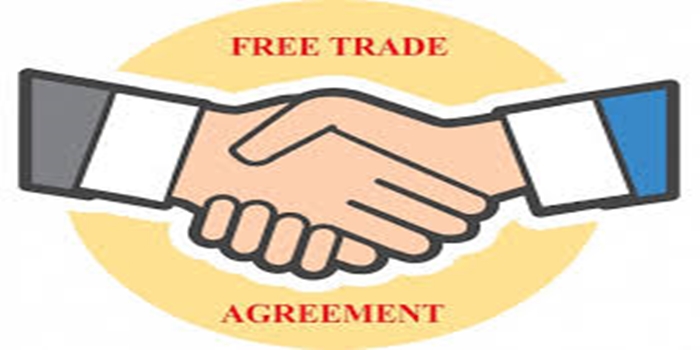In this article, we discussed the free trade agreements, the benefits, the examples, the types, we also talked about the advantage and disadvantage.
Definition
A free trade agreement: is a legally required treaty between countries that reduces or eliminates trade barriers. FTAs are designed to make trade more efficient and profitable, and to strengthen commercial ties between participating countries.
How do FTAs work?
FTAs remove tariffs on goods
FTAs simplify customs procedures
FTAs remove restrictions on what can be traded
FTAs make it easier for people to travel and live in each other’s countries
FTAs protect investors and intellectual property rights.
Free trade agreements (FTAs) can benefit countries and businesses by:
Lowering prices: FTAs remove tariffs and other trade barriers, which can lead to lower prices for consumers
Increasing competition: FTAs encourage competition, which can lead to better quality products and services
Increasing access to markets: FTAs can expand the market of potential customers and suppliers for producers
Attracting foreign investment: FTAs can help countries attract foreign investment capital
Creating high-paying jobs: FTAs can help countries create high-paying jobs for local workers
Encouraging economic growth: FTAs can help countries achieve rapid economic growth
Improving access to government contracts: FTAs can give businesses within the agreement access to government contracts
Improving access to visas: FTAs can give businesses within the agreement access to visas or visas with better conditions
Improving investor protection: FTAs can provide increased protection for investors
Simplifying customs procedures: FTAs can simplify customs procedures
Making it easier for business people to travel: FTAs can make it easier for business people to travel or live in each other’s country.
There are several types of free trade agreements, including:
Bilateral free trade agreements
Involve two countries
Remove trade barriers to promote trade and investment
Aim to expand market access and economic growth
Regional free trade agreements
Take place within a specific region
The United States-Mexico-Canada Agreement (USMCA) is an example of a regional trade agreement
Multilateral free trade agreements
Involve more than two countries
Aim to liberalize trade by reducing or eliminating trade restrictions
The Regional Comprehensive Economic Partnership (RCEP) is an example of a multilateral free trade agreement
World Trade Organization agreements
Cover trade in goods, intellectual property, and investments
The Agreement on Trade-Related Aspects of Intellectual Property Rights is an example of a World Trade Organization agreement
Free trade agreements facilitate the trade of goods by eliminating trade barriers, such as tariffs, import quotas, and export sanctions.
Free trade agreements (FTAs) have advantages and disadvantages.
Advantages
Economic growth: FTAs can help countries grow their economies.
Increased market access: FTAs can open up new markets for countries.
Lower prices: FTAs can help consumers pay lower prices.
Job creation: FTAs can help create jobs.
Investment: FTAs can encourage investment in a country.
Standard of living: FTAs can help improve a country’s standard of living.
Eliminate monopolies: FTAs can help eliminate global monopolies by increasing competition.
Disadvantages
Job losses: FTAs can cause job losses in certain industries.
Trade imbalances: FTAs can cause trade imbalances.
Threat to domestic industries: FTAs can threaten domestic industries.
Environmental concerns: FTAs can lead to environmental concerns.
Loss of natural resources: FTAs can lead to the degradation of natural resources.
Loss of traditional livelihoods: FTAs can lead to the loss of traditional livelihoods.
Trade diversion: FTAs can cause trade diversion, which can lead to welfare losses.
Conclusion
A Free Trade Agreement (FTA) is a treaty between two or more countries that aims to reduce or eliminate trade barriers, like tariffs and quotas, by creating a more open market for goods and services between participating nations, often including provisions for investment protection and intellectual property rights, with the goal of facilitating stronger commercial ties between the countries involved.


